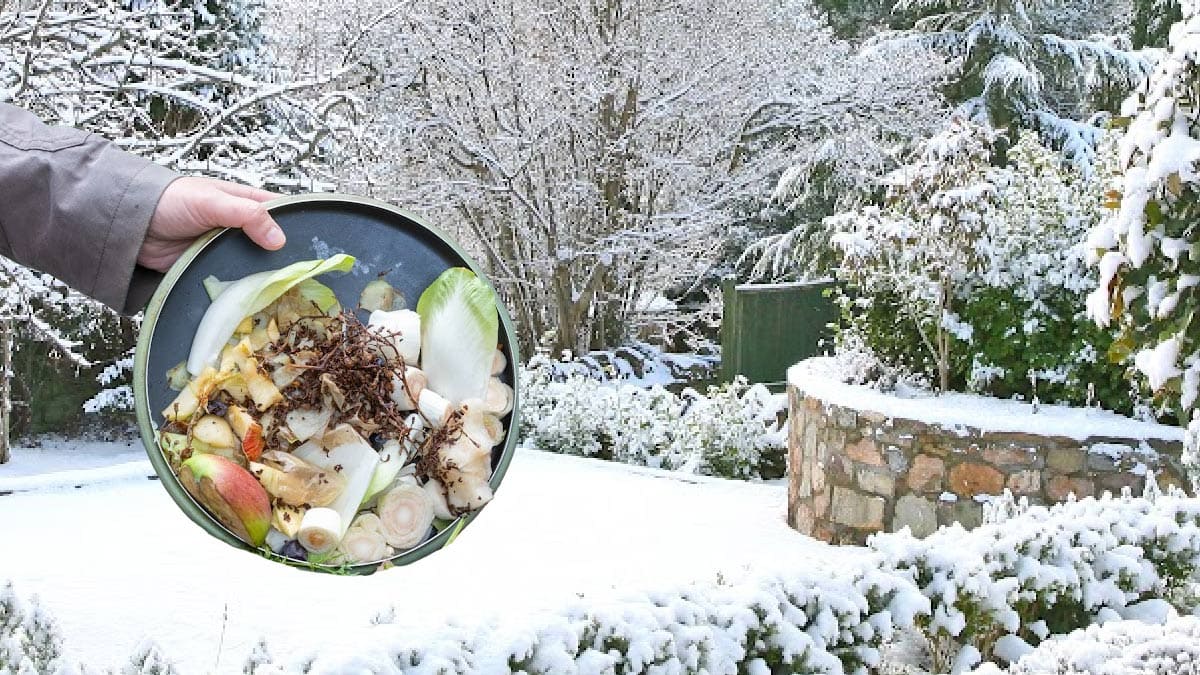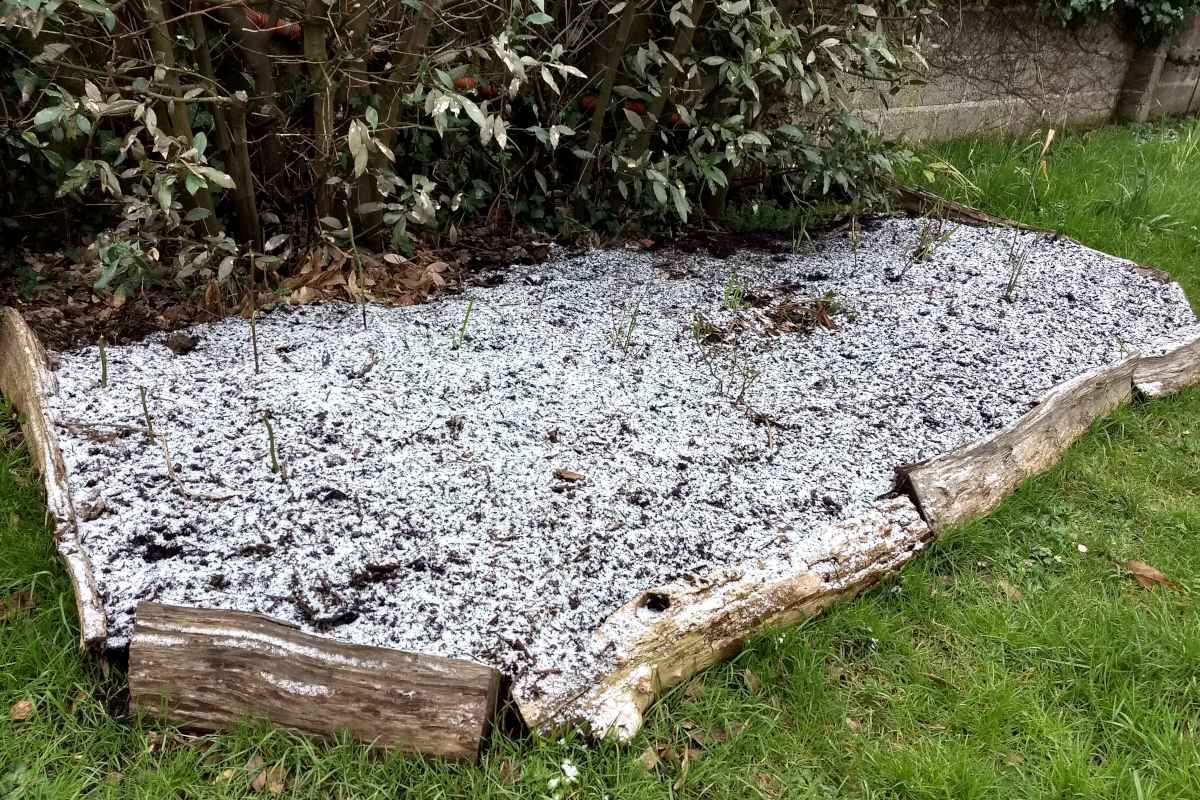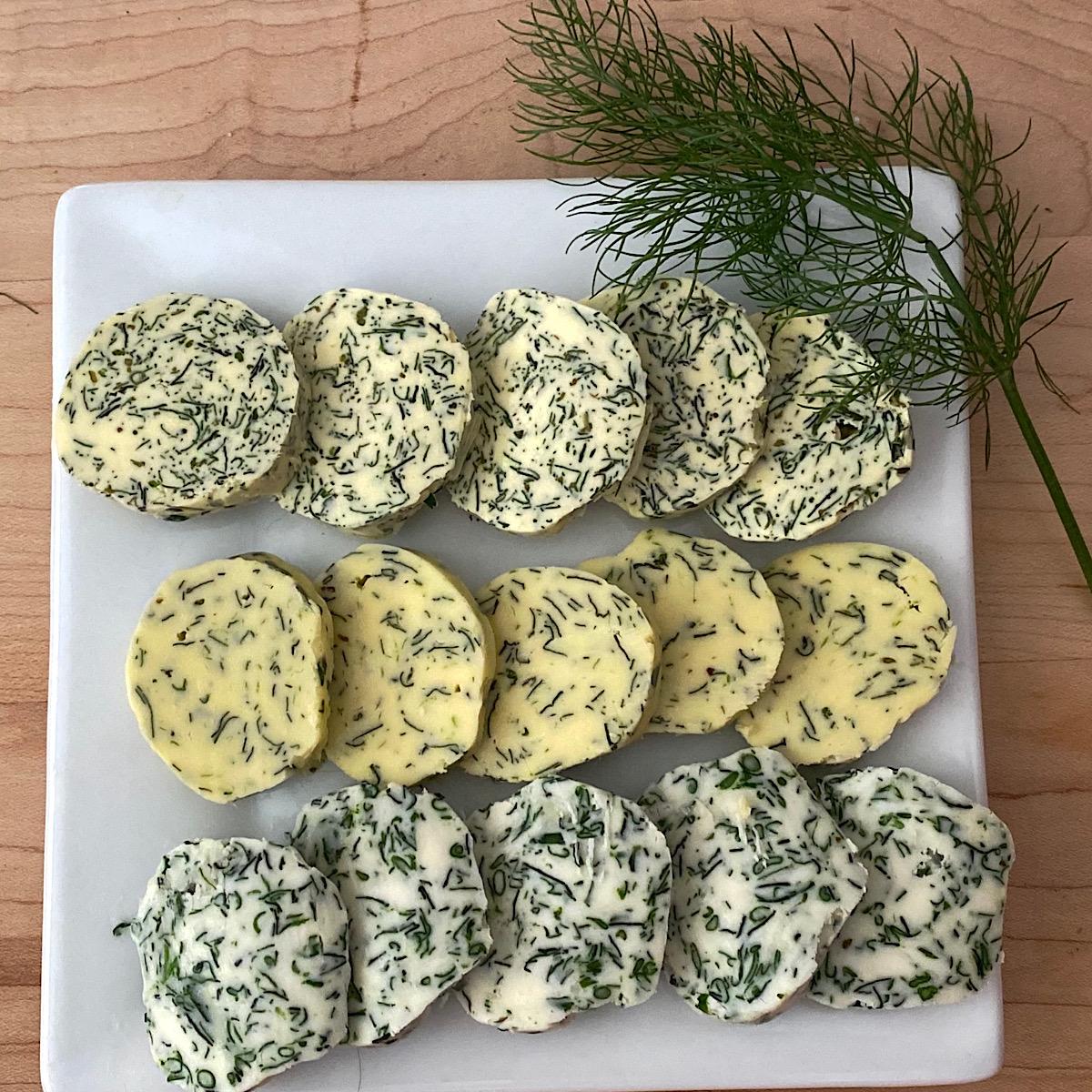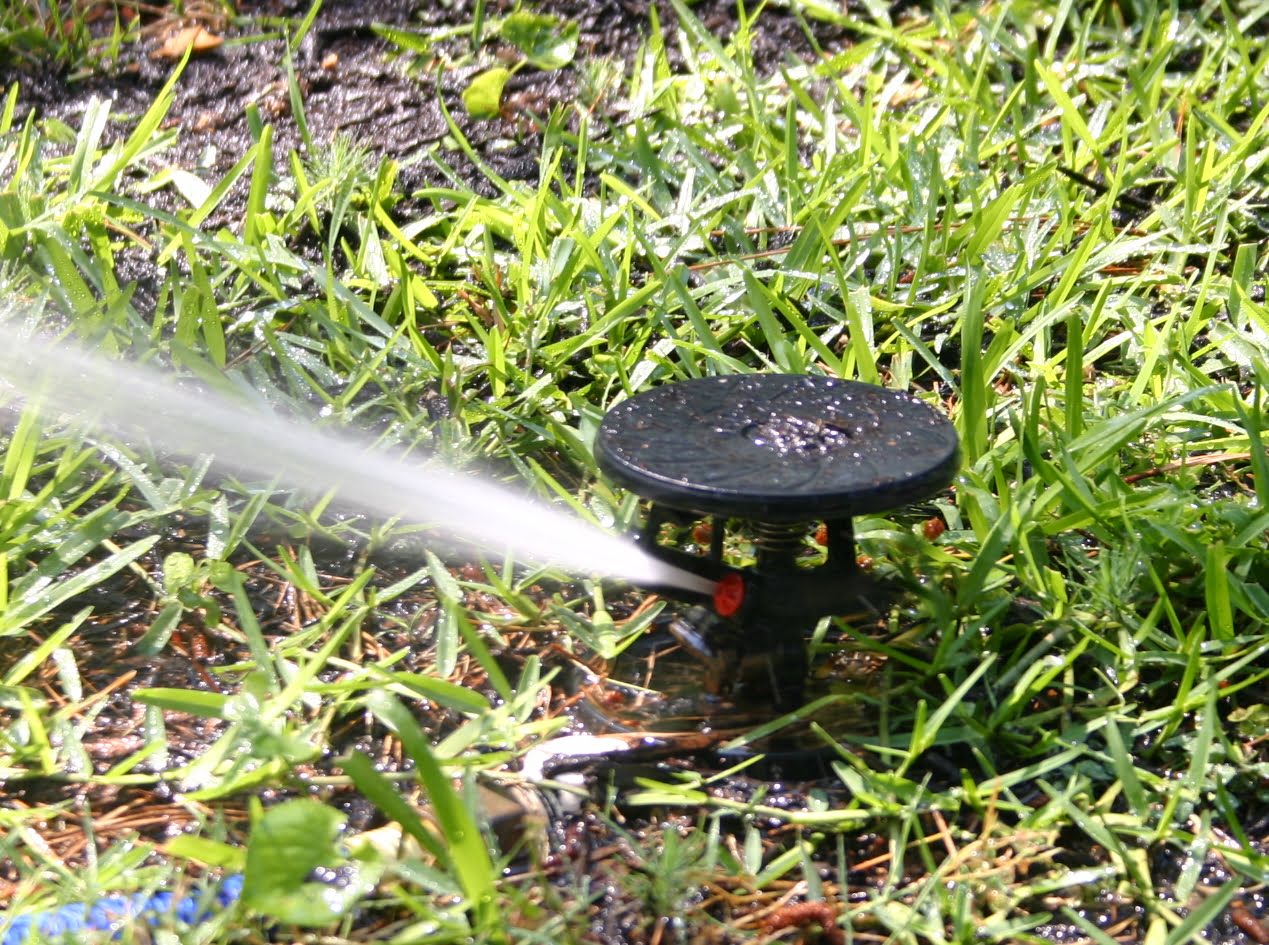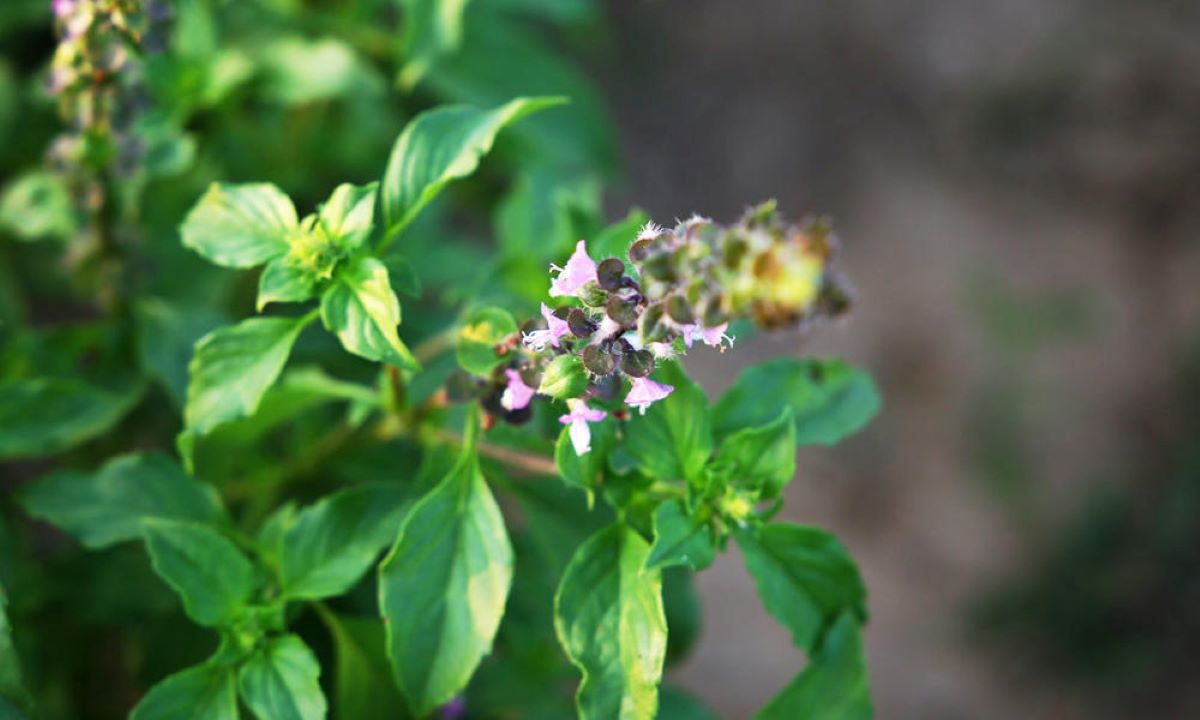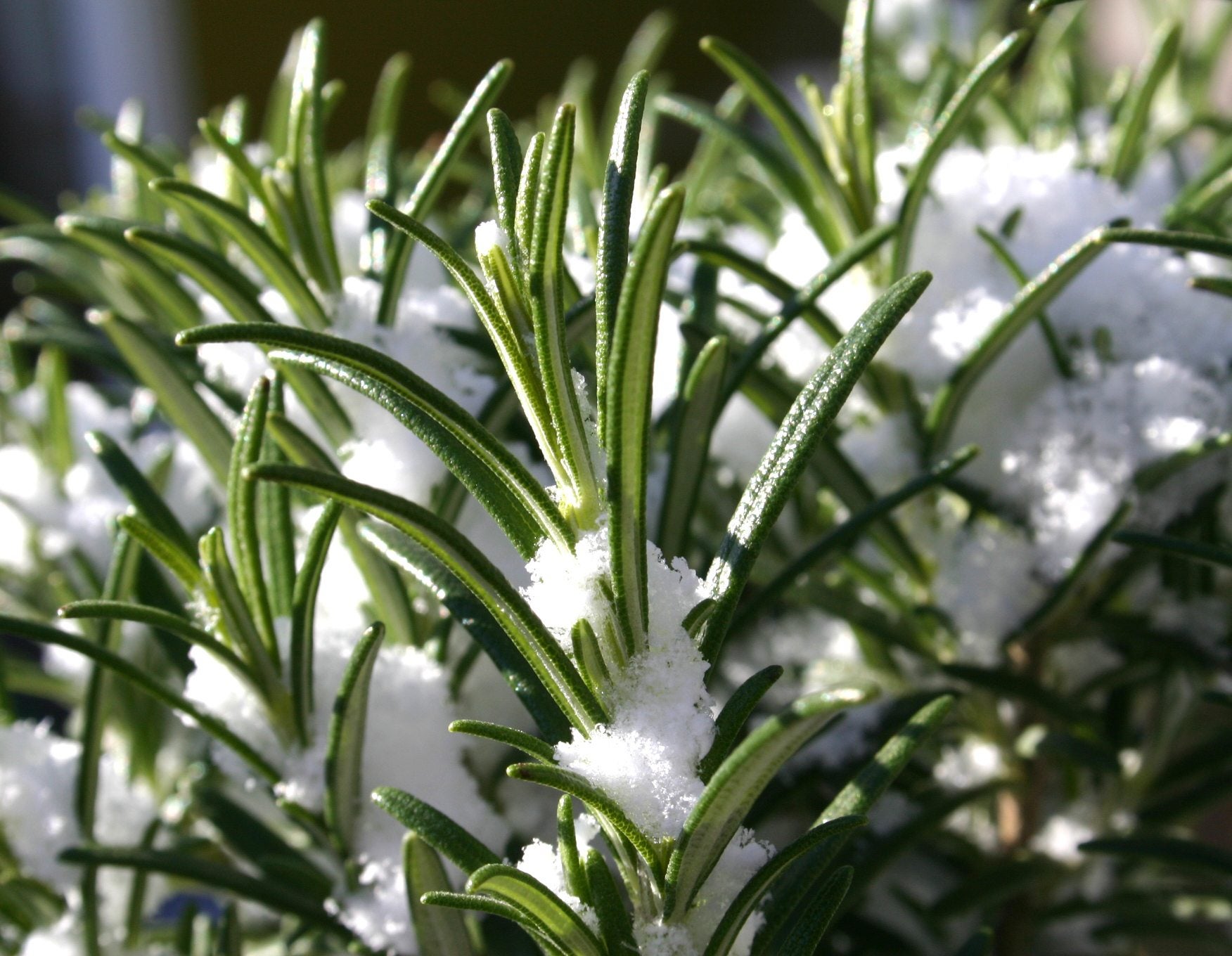Home>Types of Gardening>Edible Gardening>What Herbs Survive Winter
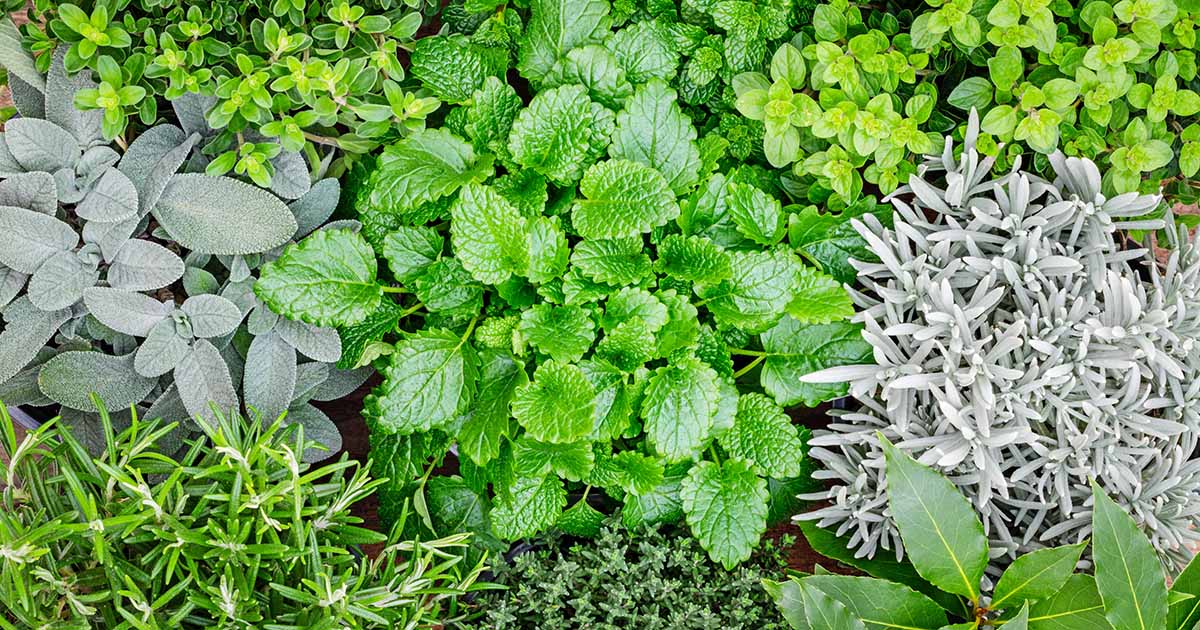

Edible Gardening
What Herbs Survive Winter
Modified: January 22, 2024
Discover which edible gardening herbs can survive the winter and continue to thrive in your garden. Plan your winter garden with these resilient herbs.
(Many of the links in this article redirect to a specific reviewed product. Your purchase of these products through affiliate links helps to generate commission for Chicagolandgardening.com, at no extra cost. Learn more)
Table of Contents
Introduction
Welcome to the world of edible gardening, where you can grow your own fresh herbs and enjoy the flavors and benefits they bring to your culinary adventures. While many herbs thrive in the warm seasons, you may be wondering how to keep your herb garden flourishing during the colder months. In this article, we will explore the fascinating topic of winter herb survival and discover the hardy herbs that can withstand the challenges of frost and chilly temperatures.
Winter herb gardening is not only a great way to continue harvesting fresh herbs but also an opportunity to enhance the beauty of your garden with resilient plants that can brave the winter months. Understanding which herbs can survive the frost and how to protect them is essential for maintaining a successful herb garden year-round.
Whether you are a seasoned gardener or just starting to explore the joys of growing herbs, this article will provide valuable insights into the world of winter herb gardening. With a little knowledge and care, you can enjoy a bountiful herb harvest even when the snow is falling outside.
Understanding Winter Herb Survival
Winter can be a challenging time for plants, especially herbs that are more delicate and susceptible to cold temperatures. However, some herbs have developed unique adaptations that help them survive and even thrive during the winter months.
One key factor in winter herb survival is their hardiness. Hardiness refers to a plant’s ability to withstand low temperatures. Herbs that are classified as “hardy” are capable of enduring frost and freezing temperatures without significant damage to their stems, leaves, or roots. Understanding the hardiness zone of your region is crucial in selecting the right herbs to grow during winter.
Another important factor is the herb’s ability to go dormant. During the winter, many herbs enter a dormancy period where their growth slows down, conserving energy and resources. This is an adaptation that allows them to survive through the winter and resume growth when conditions become more favorable in the spring.
So, how do these herbs survive the chilly winter months? They have various strategies to protect themselves. Some herbs, like rosemary, thyme, and sage, have woody stems that offer natural insulation. These woody herbs can withstand cold temperatures better than others, and their leaves remain green and aromatic throughout the winter.
Other herbs, such as chives, parsley, and oregano, have hardy foliage that can tolerate frost. These leaves contain high levels of essential oils that act as a defense mechanism against freezing temperatures, helping the plant survive even in harsh conditions.
Interestingly, some herbs have developed adaptations to cope with the shorter days and reduced sunlight during winter. For instance, chives and parsley can regrow quickly even in low-light conditions, offering a fresh and vibrant addition to your winter dishes.
Understanding the survival mechanisms of different herbs is crucial for ensuring their well-being during the winter months. By selecting the right herbs and providing them with optimal care, you can create a thriving winter herb garden that provides you with a fresh supply of herbs all season long.
Hardy Herbs for Winter
When it comes to winter herb gardening, choosing the right herbs that can withstand the cold temperatures is essential. Fortunately, there are several hardy herbs that are well-suited for winter survival. Let’s explore some of these resilient herb varieties:
- Rosemary: Rosemary is a woody, evergreen herb that can tolerate freezing temperatures. Its aromatic leaves add a delightful flavor to dishes, and the plant’s attractive appearance makes it a valuable addition to any garden.
- Thyme: Thyme is another woody perennial herb that thrives in the winter. Its tiny leaves pack a punch of flavor and can withstand frost and cold temperatures, making it a great choice for winter herb gardens.
- Sage: Sage is a hardy herb known for its distinctive flavor. It has fuzzy leaves that can survive freezing temperatures and even snow, making it a resilient addition to your winter herb garden.
- Oregano: Oregano is a versatile herb that is often used in Mediterranean cuisine. It is well-known for its ability to tolerate cold temperatures and can even withstand light frosts, ensuring a fresh supply of flavorful leaves throughout the winter.
- Chives: Chives are a hardy herb that can thrive even in chilly conditions. Their slender, hollow leaves can tolerate frost, and they add a pleasant onion-like flavor to a variety of dishes.
- Parsley: Parsley is a cold-hardy herb that can withstand winter temperatures. Its bright green leaves add freshness to winter meals, and it is often used as a garnish or in soups and stews.
- Winter savory: As its name suggests, winter savory is specifically adapted to survive cold winters. This herb has a pungent, peppery flavor and can enhance the taste of your winter dishes.
- Mint: Mint is known for its vigorous growth and hardy nature. While it may die back in extremely cold temperatures, it can often return in the spring. This herb is perfect for adding a refreshing taste to warm winter beverages or desserts.
These hardy herbs are excellent choices for your winter herb garden. They can endure the cold temperatures and still provide you with an abundance of flavorful leaves to enhance your winter culinary creations. When selecting these herbs, consider your climate and the specific hardiness zone of your region to ensure successful winter growth.
Rosemary
Rosemary (Rosmarinus officinalis) is a beloved herb known for its strong aroma and distinct flavor. It is also a hardy herb that can survive the winter months with proper care. Rosemary is a perennial evergreen shrub native to the Mediterranean region, where it thrives in well-drained soil and ample sunlight.
One of the reasons rosemary is an excellent choice for winter herb gardening is its woody nature. The woody stems of rosemary provide natural insulation, helping the plant withstand cold temperatures. Even when exposed to frost, rosemary’s leaves remain green and aromatic, making it a beautiful addition to your winter herb garden.
When it comes to growing rosemary in winter, it’s important to choose a suitable variety. Some cultivars, such as ‘Arp’ and ‘Hill Hardy,’ have been bred specifically for their cold tolerance and can handle freezing temperatures better than others.
To ensure the survival of rosemary during winter, here are a few key tips:
- Choose a sheltered location: Plant your rosemary in a spot that is protected from harsh winds and excessive moisture. This will help prevent damage to the delicate foliage.
- Provide well-drained soil: Rosemary prefers soil that drains well and doesn’t retain excess moisture. If your soil is heavy or clay-like, consider adding organic matter or sand to improve drainage.
- Water carefully: While rosemary is drought-tolerant, it still requires some water during winter. Water deeply but infrequently, allowing the soil to dry out slightly between waterings.
- Protect from extreme cold: In regions with extremely cold temperatures, consider covering your rosemary with a frost cloth or mulching around the base of the plant to provide additional protection.
- Prune sparingly: Avoid heavy pruning during winter, as it can stimulate new growth that may not withstand cold temperatures. Instead, save major pruning for the spring when the plant is actively growing.
- Harvest the leaves: Take advantage of the aromatic rosemary leaves throughout the winter by harvesting them as needed. Be sure to leave enough foliage on the plant to support its growth.
Rosemary is a versatile herb that can be used in a variety of dishes, from roasted vegetables to grilled meats and savory bread. Its robust flavor adds depth and complexity to winter recipes, making it a valuable addition to your culinary endeavors.
By following these tips and providing the right conditions, you can successfully grow rosemary in winter and enjoy its aromatic leaves year-round. With its resilience and culinary versatility, rosemary is a must-have herb for any herb garden enthusiast.
Thyme
Thyme (Thymus spp.) is a popular herb known for its aromatic leaves and delightful flavor. This versatile herb is not only a culinary staple but also a hardy perennial that can withstand the challenges of winter. With its resilience and ability to thrive in various conditions, thyme is an excellent choice for your winter herb garden.
Thyme comes in several different varieties, including common thyme (Thymus vulgaris) and lemon thyme (Thymus citriodorus). Both varieties are known for their strong, fragrant leaves and compact growth habit, making them suitable for a range of culinary uses.
One of the reasons thyme is ideal for winter gardening is its hardiness. Thyme is a perennial herb that can survive freezing temperatures and even light frosts. Its small, tough leaves are rich in essential oils, which act as a natural defense mechanism against cold weather.
Growing thyme during winter requires some attention to its specific needs. Here are a few tips to ensure the success of your winter thyme garden:
- Select a suitable variety: Consider choosing hardy thyme cultivars such as ‘German Winter’ or ‘Winter-Hearty’ that are specifically bred to withstand colder temperatures.
- Provide well-drained soil: Thyme thrives in well-drained soil, so it’s important to ensure proper drainage. If your soil is heavy or prone to waterlogging, amend it with organic matter or perlite to improve its drainage capacity.
- Ensure adequate sunlight: Thyme requires at least 6-8 hours of sunlight each day. Place your potted thyme or plant it in a spot that receives ample sunlight during the winter months.
- Water sparingly: While thyme requires regular watering during the growing season, it needs less water during winter. Allow the soil to dry out slightly between waterings to prevent overwatering and root rot.
- Protect from harsh elements: If your region experiences extremely cold temperatures, consider covering your thyme with a frost cloth or bringing potted thyme indoors during particularly harsh weather conditions.
- Harvest as needed: Thyme can be harvested throughout the winter, albeit at a slower rate than during the growing season. Prune lightly to encourage new growth and ensure a steady supply of fresh thyme leaves for your culinary endeavors.
Thyme’s robust flavor and aromatic leaves make it a perfect addition to hearty winter stews, roasted vegetables, and savory meats. Its versatility in the kitchen and ability to withstand the winter elements make it a valuable herb to have on hand during the colder months.
By following these simple guidelines and providing the right conditions, you can enjoy the benefits of fresh thyme even in the midst of winter. Whether you grow thyme in containers or in the ground, this hardy herb will continue to bring flavor and fragrance to your winter dishes.
Sage
Sage (Salvia officinalis) is a versatile herb known for its distinct flavor and aroma. This perennial herb is not only a culinary delight but also a resilient plant that can survive the winter months with proper care. With its hardiness and lovely foliage, sage is an excellent addition to your winter herb garden.
Sage is native to the Mediterranean region and has been used for centuries for its healing properties and culinary uses. It is a woody shrub with soft, gray-green leaves that impart a strong, earthy flavor to dishes.
One of the reasons sage is an ideal herb for winter gardening is its ability to tolerate cold temperatures. The woody stems and sturdy leaves of sage provide natural insulation, enabling the plant to withstand frost and cold weather. Even in freezing temperatures, sage foliage remains resilient and retains its signature flavor.
To successfully grow sage during winter, consider the following tips:
- Select a hardy variety: Choose cultivars such as ‘Berggarten’ or ‘Purpurascens’ that are known for their cold tolerance and ability to withstand winter conditions.
- Plant in well-drained soil: Sage thrives in well-drained soil, so ensure good drainage by adding organic matter or sand to heavy or clay soil. This will prevent waterlogging and root rot.
- Provide ample sunlight: Sage requires full sun to thrive. Place your sage plants in a sunny spot that receives at least 6-8 hours of direct sunlight each day.
- Water sparingly: Sage is drought-tolerant and requires minimal watering. Allow the soil to dry out between waterings to prevent excessive moisture, which can lead to root rot.
- Protect from severe cold: In regions with severe winter weather, consider using frost cloths or covers to protect your sage plants during particularly cold spells. Mulching around the base of the plant will also help insulate the roots.
- Prune strategically: Lightly prune your sage plant in late autumn to remove any damaged or dead growth. Avoid heavy pruning during winter, as it may stimulate tender new growth that is susceptible to cold damage.
- Harvest as needed: Sage leaves can be harvested throughout the winter for culinary use. Prune sparingly to encourage new growth while ensuring you have a fresh supply of sage leaves.
Sage is a versatile herb that adds depth and richness to a variety of savory dishes. Its earthy flavor pairs well with roasted meats, vegetables, and hearty soups, making it a preferred choice for winter recipes.
By providing the right conditions and care, you can enjoy the benefits of fresh sage throughout the winter. With its hardiness and unique flavor profile, sage is a valuable herb that will continue to enhance your culinary creations during the colder months.
Oregano
Oregano (Origanum vulgare) is a perennial herb that is highly valued in culinary circles for its robust flavor. It is also a hardy herb that can tolerate cold temperatures, making it a great addition to your winter herb garden. With its resilience and versatile uses, oregano is a must-have herb for any herb enthusiast.
Native to the Mediterranean region, oregano is well-known for its aromatic leaves that pack a punch of flavor. It is a herbaceous plant with small, oval-shaped leaves that are rich in essential oils, giving oregano its characteristic taste and aroma.
One of the reasons oregano is an excellent choice for winter gardening is its ability to withstand cold temperatures. While it prefers warmer climates, oregano can handle light frosts and even cooler temperatures without significant damage.
To successfully grow oregano during winter, keep the following tips in mind:
- Plant in well-drained soil: Oregano thrives in well-drained soil that doesn’t retain excess moisture. Ensure the soil has good drainage, especially during the winter months, to prevent waterlogged roots.
- Provide ample sunlight: Oregano needs full sun to flourish. Select a sunny spot for planting or make sure your potted oregano receives at least 6-8 hours of direct sunlight each day.
- Water sparingly: Oregano is a drought-tolerant herb that requires minimal watering. Allow the soil to dry out between waterings, as overwatering can lead to root rot.
- Protect from harsh elements: In regions with severe winters, consider covering your oregano plants with a frost cloth or bringing potted oregano indoors during freezing temperatures.
- Prune lightly: Light pruning in late autumn will help tidy up the plant and remove any dead or damaged growth. Avoid heavy pruning during winter, as it may stimulate new growth that is sensitive to colder temperatures.
- Harvest as needed: Oregano leaves can be harvested throughout the winter for culinary use. Prune the stems to encourage new growth while enjoying the flavorful leaves that oregano provides.
Oregano is a versatile herb that is commonly used in Italian, Greek, and Mediterranean cuisine. Its distinctive flavor adds depth to pasta dishes, pizzas, soups, and roasted vegetables, making it a staple in many kitchens.
By providing proper care and attention, you can enjoy the benefits of fresh oregano even during the winter months. With its resilience and culinary versatility, oregano will continue to enhance your dishes and bring a taste of the Mediterranean to your winter meals.
Chives
Chives (Allium schoenoprasum) are a perennial herb that brings a fresh and delicate onion-like flavor to dishes. When it comes to winter herb gardening, chives are a standout choice due to their hardiness and ability to thrive in colder temperatures. These versatile herbs not only add flavor to your culinary creations but also add a touch of vibrant green to your winter herb garden.
Chives are native to Europe, Asia, and North America. They are known for their slender, hollow leaves and beautiful lavender-colored edible flowers. Chives are members of the onion family and are valued for their mild, onion-like taste that adds a hint of freshness to various dishes.
One of the reasons chives are perfect for winter gardening is their hardiness. These resilient herbs can tolerate frost and freezing temperatures, making them a reliable addition to your herb garden even during the coldest months. Their hardy foliage contains high levels of essential oils that act as a protective mechanism against chilly conditions.
Here are some tips to ensure your chives thrive during winter:
- Provide sufficient sunlight: Chives require at least 4-6 hours of direct sunlight each day. Place them in a sunny spot or near a south-facing window if you’re growing them indoors.
- Water moderately: Chives have moderate water requirements. Water the soil when it becomes dry to the touch, but avoid overwatering, as excessive moisture can lead to root rot.
- Protect from severe cold: If you live in an area with extremely cold winters, provide some protection for your chives. Cover them with a frost cloth or mulch around the base of the plants to insulate the roots.
- Harvest carefully: Chives can be harvested throughout the winter, but avoid cutting them back excessively. Instead, snip the leaves carefully from the outside of the clump, allowing the inner leaves to continue growing.
- Divide and propagate: Winter is an excellent time to divide mature chive plants to promote healthy growth. Divide the clumps and replant them to create more chive plants or share them with fellow gardeners.
- Use in various dishes: Add chopped chives to soups, salads, omelets, mashed potatoes, and other savory dishes. Their mild and refreshing flavor pairs well with a wide range of ingredients.
Chives are not only a flavorful addition to your winter recipes but also a visually appealing herb that brings a touch of green to your garden during the colder months. With their hardiness and versatility, chives are a fantastic choice for any winter herb garden.
By providing the right care and creating a suitable environment, you can enjoy the benefits of fresh chives all winter long. Whether you grow them indoors or in your garden, these hardy herbs will continue to enhance your culinary creations and bring a burst of freshness to your winter dishes.
Parsley
Parsley (Petroselinum crispum) is a popular herb that adds freshness and vibrant flavor to a variety of dishes. While it is commonly associated with warmer seasons, parsley is surprisingly resilient and can thrive even in the winter months. With its versatility and ability to withstand colder temperatures, parsley is a fantastic addition to your winter herb garden.
There are two main types of parsley: curly parsley and flat-leaf (Italian) parsley. Both varieties are suitable for winter gardening and offer distinct flavors and appearances.
One of the reasons parsley is an excellent choice for winter gardening is its ability to tolerate cold temperatures. While it may seem delicate, parsley is surprisingly hardy and can withstand light frosts and even snow. The roots of parsley plants can continue to grow and provide fresh leaves along with the plant’s resilience during winter.
Consider the following tips to ensure successful parsley growth during winter:
- Plant in well-drained soil: Parsley prefers well-drained soil that retains some moisture. Ensure the soil is well-draining to prevent waterlogging and root rot.
- Provide partial shade: While parsley thrives in full sun during the warmer months, it benefits from some shade during the intense sunlight of winter. Partial shade helps prevent the leaves from becoming scorched or damaged.
- Water carefully: Parsley requires consistent moisture but can be sensitive to overwatering. Water the plants when the top inch of soil feels dry, but avoid saturating the soil.
- Protect from severe cold: If you live in an area with extremely cold winters, consider covering your parsley with a frost cloth or moving potted plants indoors during freezing temperatures.
- Harvest outer leaves: During winter, harvest parsley by snipping the outer leaves as needed. This allows the inner leaves to continue growing and ensures a fresh supply of parsley leaves throughout the season.
- Sow seeds in succession: To ensure a continuous harvest, sow parsley seeds in succession every few weeks. This will provide you with a steady supply of fresh parsley leaves throughout the winter.
Parsley’s vibrant green color and refreshing flavor make it an excellent addition to winter dishes. It can be used as a bright garnish, incorporated into soups and stews, or added to sauces and salads for an extra burst of freshness.
By following these simple guidelines and providing the right conditions, you can enjoy the benefits of fresh parsley even during the winter months. With its resilience and versatility, parsley will continue to enhance your culinary creations and provide a touch of green to your winter herb garden.
Winter savory
Winter savory (Satureja montana) is a flavorful herb that is specifically adapted to survive and thrive during the winter months. Known for its robust taste and aromatic leaves, winter savory is an excellent choice for adding flavor to your winter dishes and enhancing your herb garden during the colder seasons.
Winter savory is a hardy perennial herb that is native to the Mediterranean region. It is a member of the mint family and is closely related to summer savory. Winter savory is known for its small, narrow leaves and delicate purple flowers that bloom in the summer months.
One of the standout features of winter savory is its ability to withstand cold temperatures. Unlike many other herbs that may succumb to frost, winter savory can handle both freezing temperatures and snowfall. This resilience makes it a valuable addition to your winter herb garden.
Here are some tips to ensure successful winter savory growth:
- Plant in well-drained soil: Winter savory prefers well-drained soil. Ensure the soil is loose and well-aerated to avoid waterlogging, especially during the winter months.
- Provide full sun: Winter savory thrives in full sun. Choose a spot in your garden that receives at least 6-8 hours of direct sunlight each day.
- Water sparingly: Winter savory is drought-tolerant and requires minimal watering. Allow the soil to dry out between waterings to prevent root rot.
- Protect from extreme cold: While winter savory is hardy, extreme cold can still cause damage. Cover plants during freezing temperatures with a frost cloth or bring potted plants indoors during severe weather conditions.
- Prune lightly: Light pruning of winter savory in early spring helps maintain a compact and bushy shape. Avoid heavy pruning during winter, as it may encourage tender new growth that is vulnerable to cold.
- Harvest as needed: Winter savory leaves can be harvested throughout winter to add flavor to your dishes. Prune the stems carefully to encourage new growth and ensure a steady supply of fresh herbs.
Winter savory’s strong, peppery flavor makes it a great addition to hearty winter stews, roasts, and savory sauces. Its taste is often described as a cross between thyme and mint, offering a unique twist to your winter culinary creations.
By following these simple tips and providing the right care, you can enjoy the benefits of fresh winter savory throughout the winter months. With its hardiness and bold flavor, winter savory brings warmth and depth to your winter dishes and adds a touch of beauty to your herb garden.
Mint
Mint (Mentha spp.) is a refreshing herb that is widely known for its aromatic leaves and cool, invigorating flavor. While mint is often associated with warmer climates, there are several mint varieties that can withstand the challenges of winter. With its resilience and versatility, mint is a fantastic addition to your winter herb garden.
Mint is a fast-growing perennial herb that is a member of the Lamiaceae family. It comes in various species, including peppermint, spearmint, and chocolate mint, each with its distinct flavor profile and culinary uses.
One of the reasons mint is suitable for winter gardening is its hardiness and vigorous growth habit. While it may die back in extremely cold temperatures, mint can often regenerate from the root system in early spring, providing you with fresh growth once the weather warms up again.
Here are some tips to ensure successful winter mint growth:
- Plant in well-drained soil: Mint thrives in moist, well-drained soil. Ensure the soil retains some moisture but doesn’t become waterlogged, especially during winter.
- Choose a suitable container: If you prefer to grow mint in pots, select a container with adequate drainage holes to prevent waterlogged roots. This will allow you to bring the mint indoors during cold snaps if needed.
- Provide partial shade: Mint appreciates some shade during the intense sunlight of winter. If you’re growing mint outdoors, a spot that receives partial sunlight or dappled shade is ideal.
- Water appropriately: Mint requires consistent moisture but can be sensitive to overwatering. Water the soil when the top inch feels dry, but avoid saturating the roots.
- Mulch around the base: Apply a layer of mulch around the mint plant to insulate the roots during winter. This helps protect the roots from freezing temperatures and provides some protection against frost.
- Harvest as needed: Mint leaves can be harvested throughout the winter for culinary use. Snip the leaves close to the stem to encourage new growth and ensure a continuous supply of fresh mint leaves.
Mint’s refreshing flavor makes it a versatile herb that can enhance a wide range of dishes. It can be used in beverages like hot tea or cold-infused water, incorporated into salads, or as a flavorful addition to desserts and savory recipes.
By providing the right care and environment, you can enjoy the benefits of fresh mint even during the winter months. Whether you grow it outdoors or in pots, mint will continue to add a burst of freshness and flavor to your winter culinary creations.
Protecting Herbs in Winter
As winter approaches, it’s essential to take steps to protect your herbs from the harsh elements and ensure their survival through the colder months. While some herbs are more resilient than others, providing the right protection can make a significant difference. Here are some methods to safeguard your herbs during winter:
1. Mulching: Apply a layer of organic mulch, such as straw or dried leaves, around the base of your herbs. This mulch acts as insulation, helping to regulate soil temperature and retain moisture. It also protects the roots from freezing temperatures and prevents heaving, which can occur when the soil repeatedly freezes and thaws.
2. Windbreaks: Some herbs, like rosemary and thyme, can be susceptible to damage from strong winds. To shield them from the cold, drying effects of winter winds, create a windbreak using structures like garden fences, trellises, or even strategically placed shrubs and trees.
3. Frost cloths or covers: When the forecast predicts frost or extreme cold, cover your herbs with frost cloths or breathable fabric covers. These protective barriers trap heat and prevent frost from settling on the leaves, reducing the risk of cold damage.
4. Cold frames or hoop houses: For herbs in pots or containers, consider using cold frames or hoop houses. These structures provide additional insulation and create a microclimate that helps retain warmth and protect your herbs from freezing temperatures.
5. Indoor relocation: If you’re growing herbs in pots or containers, you may consider moving them indoors during the coldest part of winter. Find a location with sufficient sunlight, such as a bright windowsill or a room with grow lights, where your herbs can continue to thrive.
6. Watering adjustments: While it’s crucial to avoid overwatering during winter, it’s equally important to ensure your herbs receive adequate moisture. Check the soil moisture level regularly and water deeply but infrequently, allowing the soil to dry out slightly between waterings.
7. Pruning and cleaning: Before winter sets in, prune and clean your herbs. Remove any dead or damaged foliage to prevent the spread of diseases and pests. Pruning also helps improve airflow and reduces the risk of fungal infections during periods of high moisture.
8. Monitor for pests and diseases: Keep a close eye on your herbs for signs of pest infestations or diseases. Winter can be a challenging time for herbs, making them more susceptible to certain issues. Treat any pests or diseases promptly to prevent further damage.
Remember that different herbs have varying degrees of hardiness, and not all may require the same level of protection. Consider the specific needs of each herb and its cold tolerance level when implementing protective measures.
By applying these protective strategies, you can help safeguard your herbs from winter’s harsh conditions and increase their chances of thriving once spring arrives. With proper care and attention, your herbs will not only survive but also provide you with fresh flavors and fragrances all year round.
Tips for Winter Herb Care
Winter herb care is essential for ensuring the health and vitality of your herb garden during the colder months. While many herbs can withstand winter conditions, they still require some extra attention and care. Here are some tips to help you successfully care for your herbs during winter:
1. Know your hardiness zones: Understand the hardiness zones of your region and choose herbs that are suitable for your specific climate. This will ensure that you select herbs that have a higher chance of surviving the winter and thriving in your garden.
2. Provide adequate sunlight: Most herbs require ample sunlight to grow, even in winter. Place your herb garden in a spot that receives the maximum amount of sunlight possible during the shorter winter days. If growing indoors, consider using grow lights to supplement natural light.
3. Adjust watering frequency: During winter, herbs generally require less water due to reduced evaporation rates. Be mindful of soil moisture levels and water your herbs only when the top inch of soil feels dry. Avoid overwatering, as waterlogged roots are more susceptible to damage in cold weather.
4. Protect from extreme cold: Monitor weather forecasts and take necessary precautions when extreme cold temperatures are expected. Cover your herbs with frost cloths or move potted plants indoors. Consider using insulation, such as straw or mulch, around the base of perennial herbs to provide added protection against freezing temperatures.
5. Avoid heavy pruning: Refrain from heavy pruning during winter, as it can stimulate new growth that may struggle to survive in cold temperatures. Reserve major pruning for spring when the herbs are actively growing. Light pruning may be necessary to remove any dead or damaged foliage.
6. Harvest strategically: Continually harvest herbs to promote new growth, but do so sparingly during winter. Focus on using the outer leaves or stems, allowing the inner parts of the plant to continue growing. This helps ensure a steady supply of fresh herbs throughout the season.
7. Monitor for pests and diseases: Inspect your herbs regularly for signs of pests or diseases, as some insects and pathogens are more prevalent in winter. Treat any issues promptly to prevent them from spreading and causing significant damage to your herbs.
8. Plan for spring: Use the winter months to plan for the upcoming spring. Research new herbs to grow, prepare soil amendments, and clean and organize your garden tools and supplies. This will help you stay ahead and make the most of the upcoming growing season.
By following these tips, you can effectively care for your winter herb garden and ensure the well-being of your herb plants during the colder months. With proper attention and mindful practices, your herbs will continue to thrive and provide you with fresh flavors throughout the winter season.
Conclusion
Winter herb gardening presents a unique set of challenges and opportunities. With the right knowledge and care, you can successfully grow a vibrant and productive herb garden even during the colder months. Understanding the hardiness of different herbs, providing adequate protection, and implementing proper winter care techniques are key to maintaining the health and vitality of your herbs.
Hardy herbs such as rosemary, thyme, sage, oregano, chives, parsley, winter savory, and mint are excellent choices for winter herb gardens. These herbs have adapted to withstand low temperatures and continue to provide fresh flavors and aromas throughout the winter season.
To protect your herbs during winter, consider using mulch, windbreaks, frost cloths, or covers to shield them from freezing temperatures and harsh elements. Adjust watering practices, avoid heavy pruning, and monitor for pests and diseases that may be more prevalent during this time.
Winter herb care requires attention, but it also offers rewards. By nurturing your herbs through the winter, you can enjoy a continuous supply of fresh flavors to enhance your culinary creations. Additionally, tending to your herb garden during winter provides an opportunity for reflection, planning, and preparation for the upcoming spring season.
Whether you grow herbs in a garden bed, containers, or indoors, the joy of winter herb gardening lies in the ability to savor the flavors, fragrance, and beauty of fresh herbs even when the landscape is covered in snow. So, roll up your sleeves, embrace the winter season, and enjoy the delights of a thriving winter herb garden.

